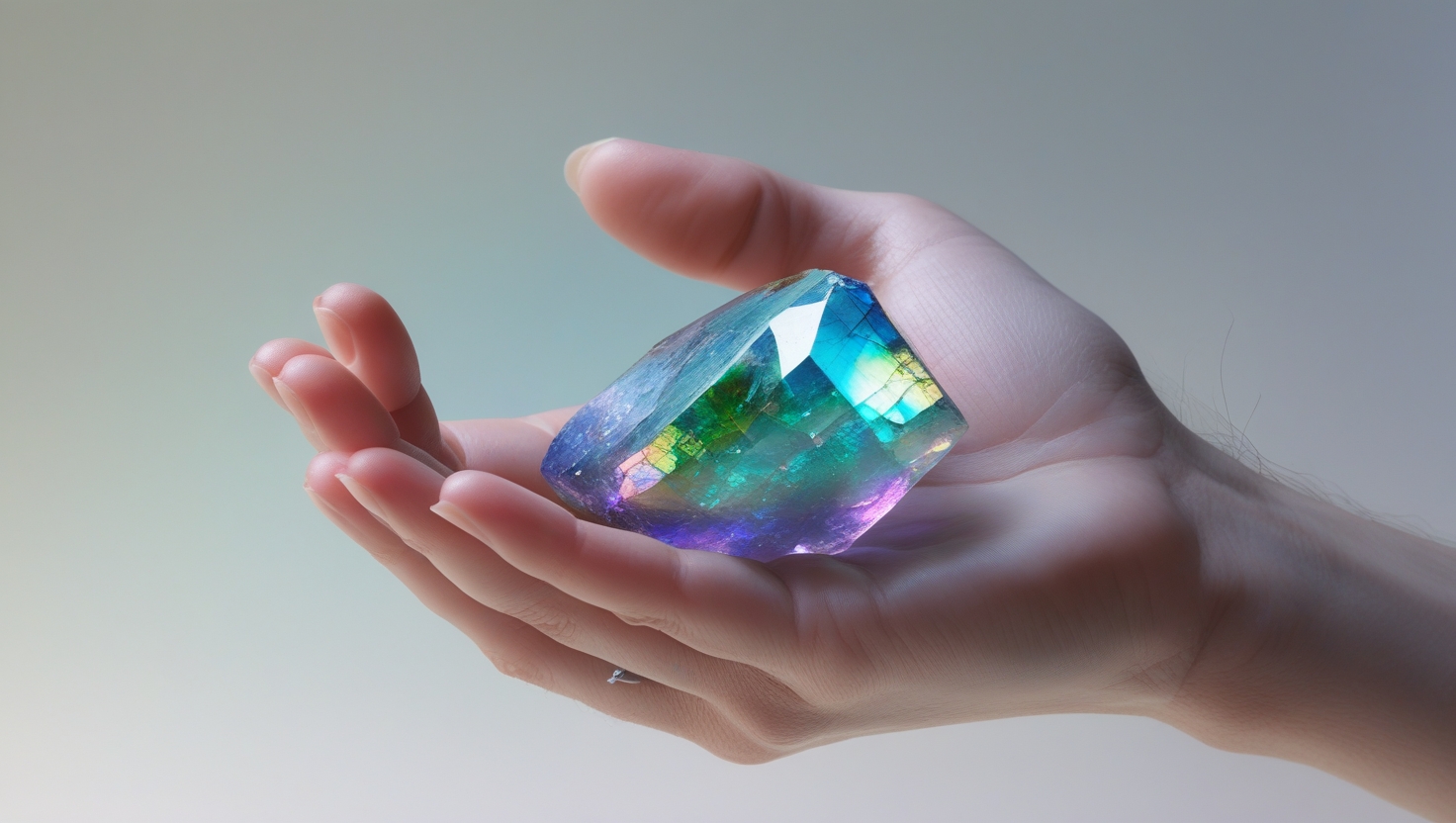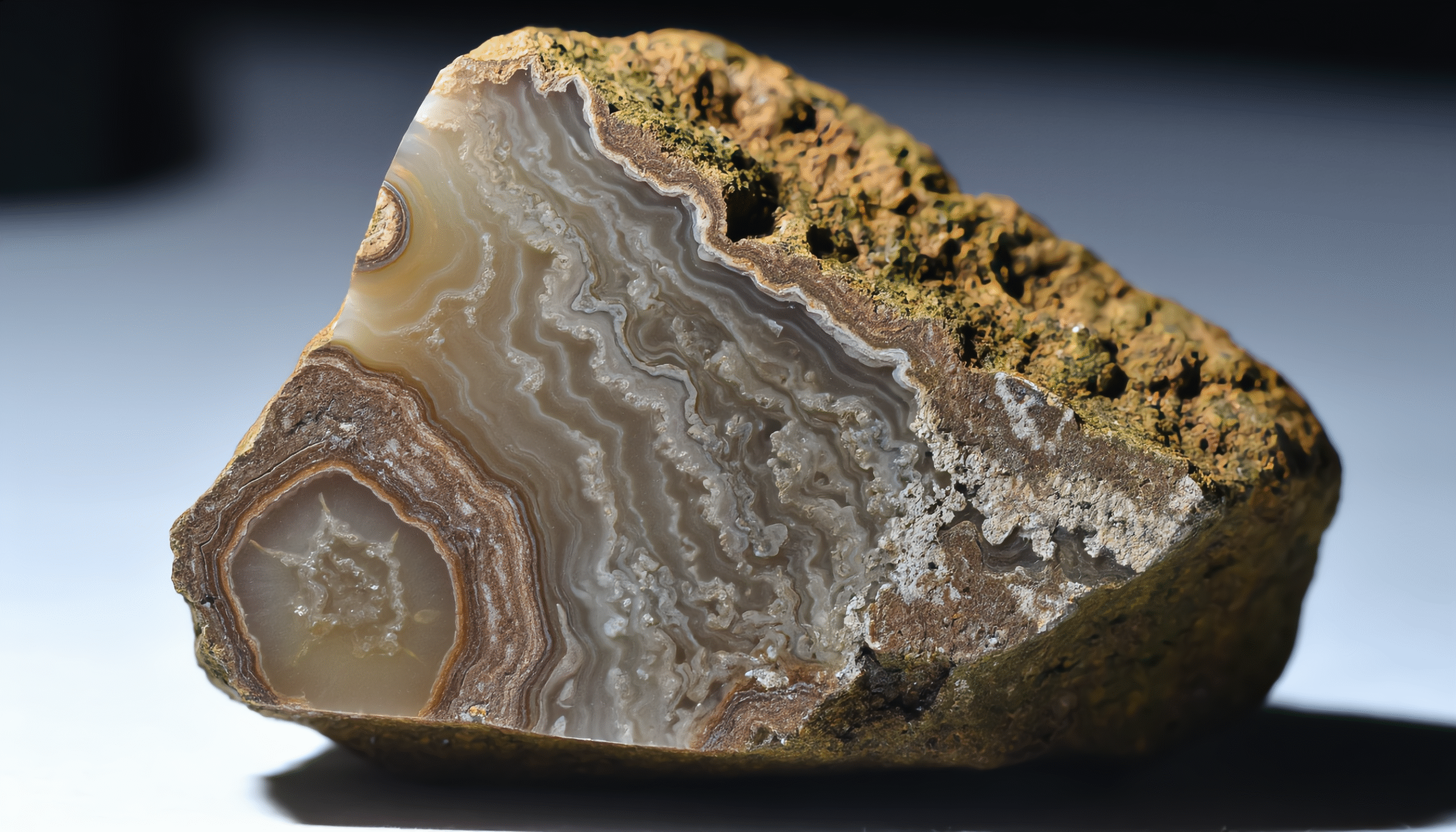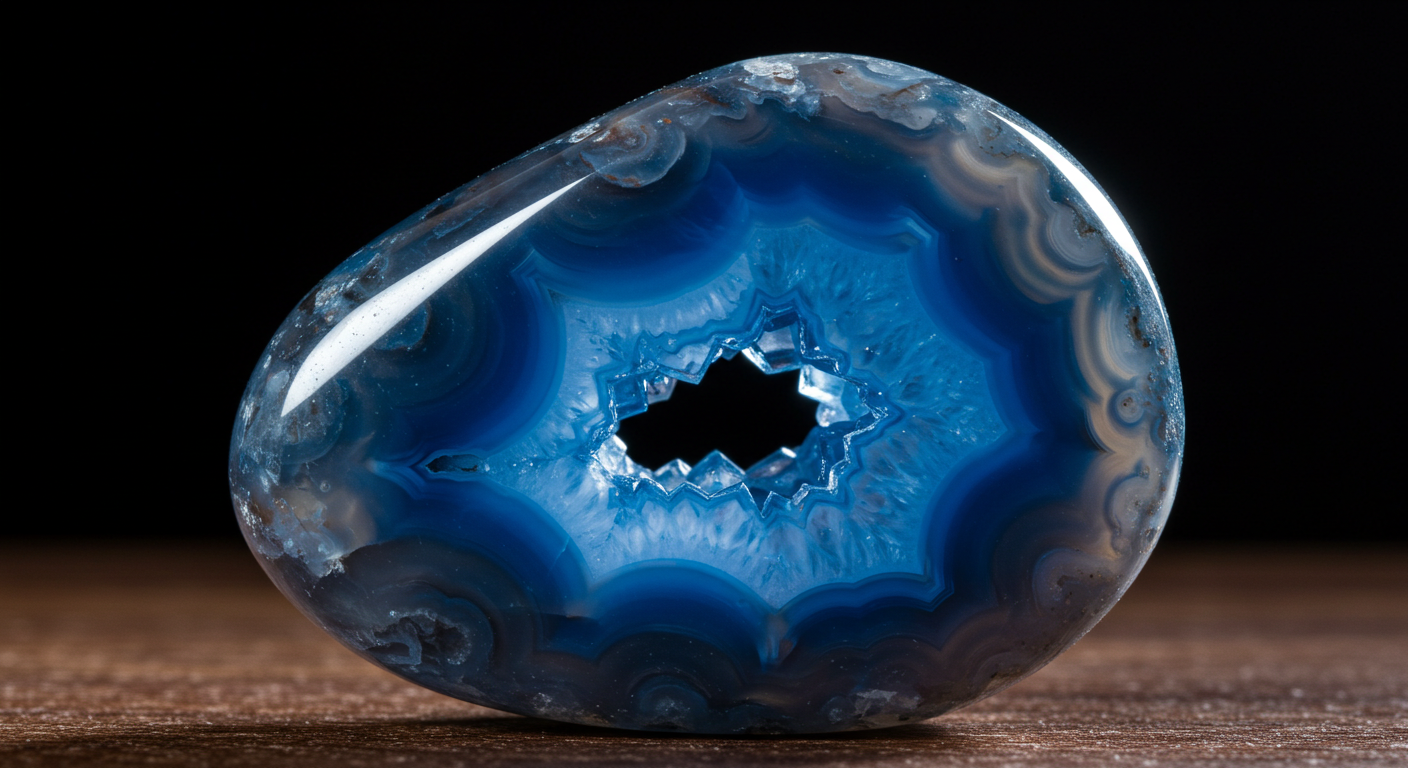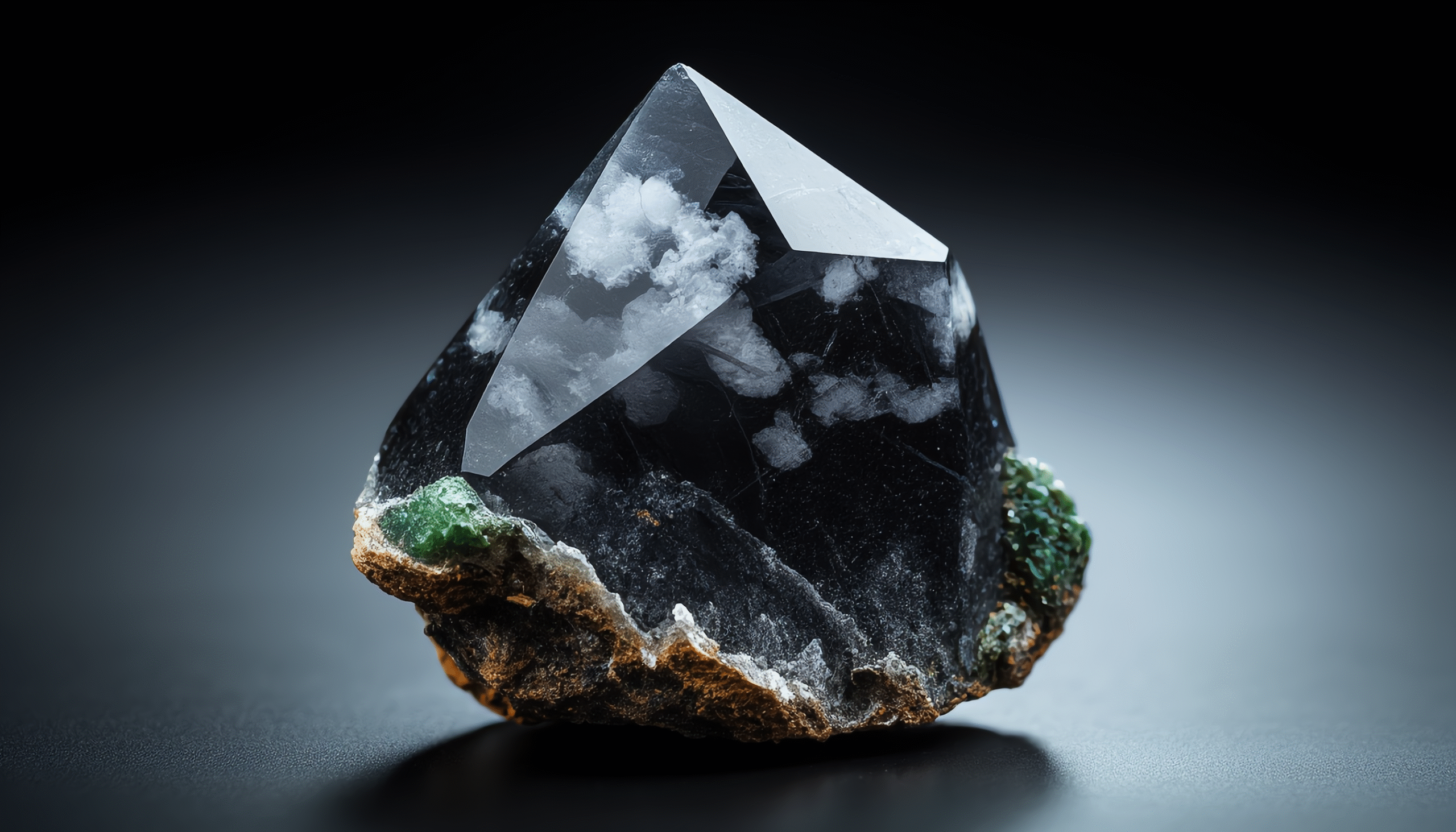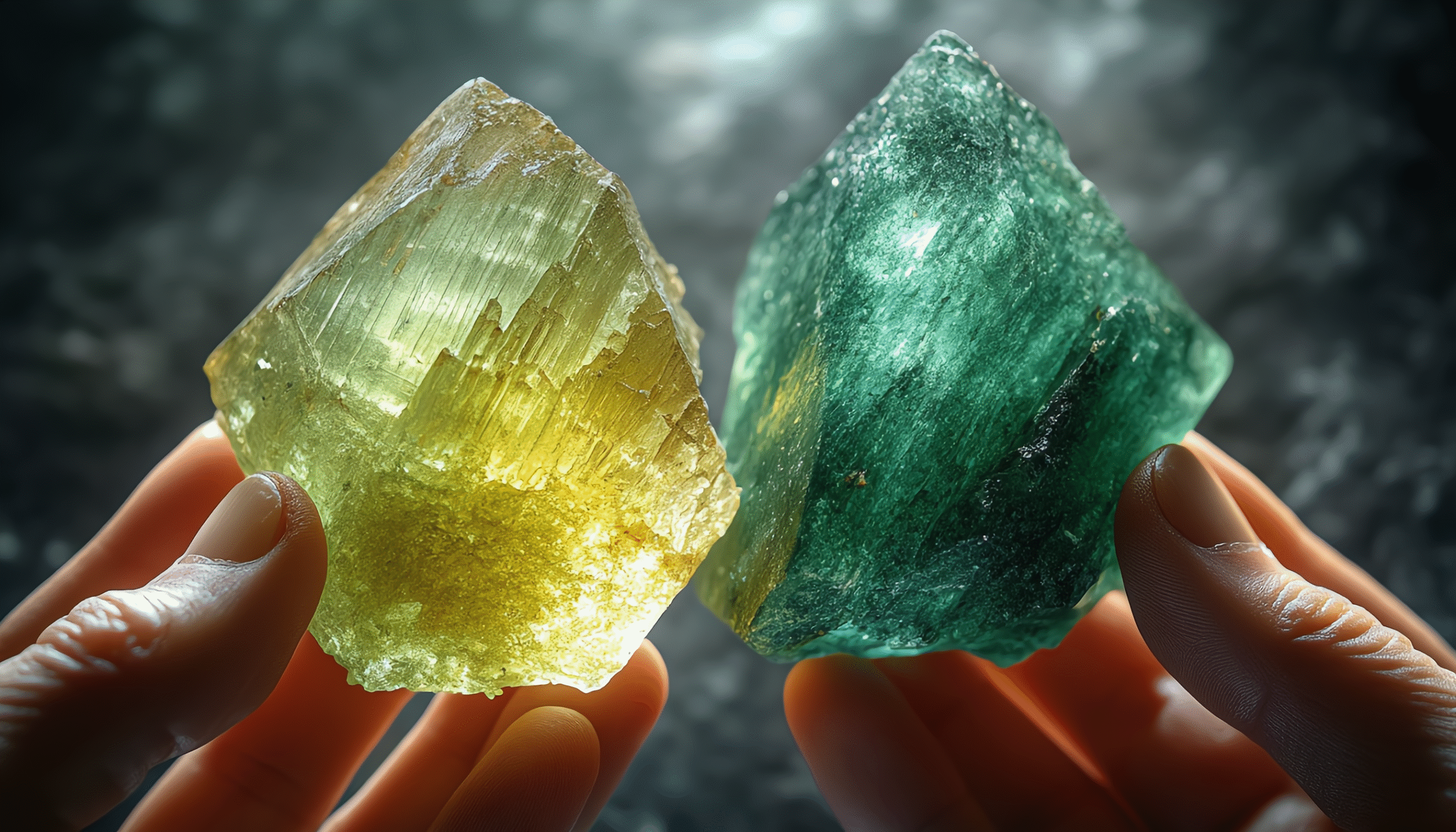Discover the beauty shown in a close-up of a hand holding an iridescent mineral specimen. Learn more about collecting unique and dazzling minerals.
There are images that instantly connect us to the wonders of the natural world, images that evoke curiosity and a sense of magic. Among these, few are as captivating as a close-up of a hand holding a vibrant, iridescent mineral specimen. This singular image, rich in detail and human scale, brings the immense geological forces that create such beauty down to a personal level, inviting viewers to lean in and explore a miniature universe of light and color.
This article delves into the layers of fascination contained within such a scene: the inherent allure of an iridescent mineral specimen, the intimacy and perspective offered by a close-up, and the profound connection represented by a hand holding a piece of Earth’s artistry. We will explore the science behind the shimmer, the significance of the individual mineral specimen, and why this simple act – a hand holding – is such a powerful visual motif on any website showcasing natural treasures.
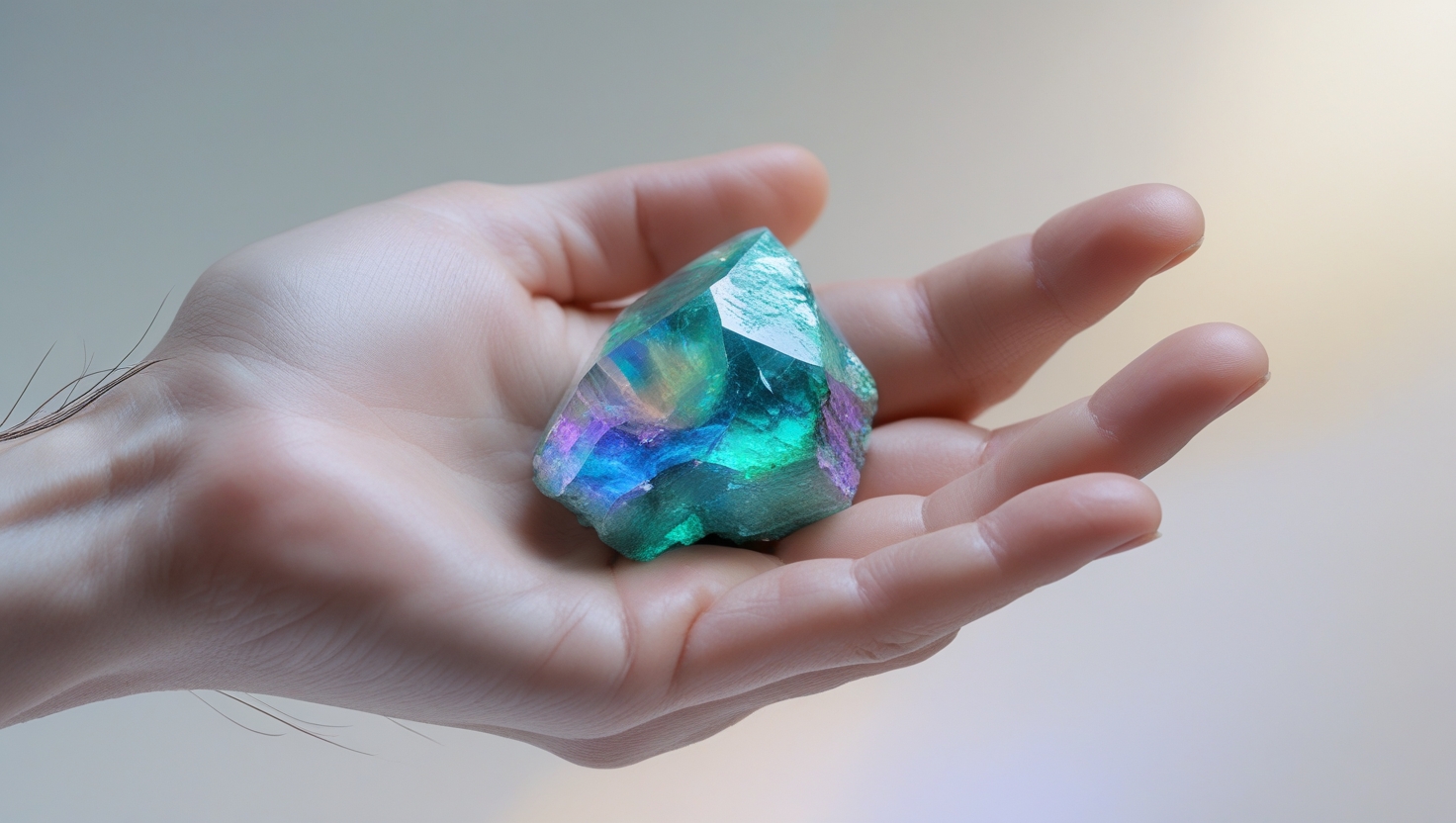
The Allure of the Iridescent Mineral Specimen
Let’s start with the star of the image: the iridescent mineral specimen. What does “iridescent” mean in the context of minerals? It refers to the phenomenon where the surface or internal structure of the mineral creates a display of colors that appears to change depending on the angle of light and the viewer’s perspective. This isn’t the simple surface sheen of a metallic mineral; iridescence is a dynamic play of light, often showing spectral colors like those in a rainbow or on a soap bubble.
The science behind mineral iridescence is typically due to interference or diffraction of light as it interacts with fine structures within or on the surface of the mineral specimen. Common causes include:
- Thin-Film Interference: Light waves reflecting off different layers (like thin mineral coatings or internal lamellae) interfere with each other, enhancing or cancelling certain wavelengths to produce color. Think of the colors on an oil slick on water – a similar principle.
- Diffraction: Light bending around tiny structures, like microscopic grooves or spheres, spreading white light into its constituent colors. Opal’s play-of-color is a prime example of diffraction caused by stacks of silica spheres.
- Exsolution Lamellae: In minerals like Labradorite, iridescence (specifically called labradorescence) is caused by light scattering off fine, parallel layers of different feldspar compositions within the crystal structure.
Examples of iridescent mineral specimens that are highly sought after include:
- Labradorite/Spectrolite: Famous for its flashes of electric blue, green, gold, orange, and sometimes purple caused by internal lamellae.
- Bornite (Peacock Ore): This copper iron sulfide mineral often develops a vibrant, artificial iridescence on its surface due to tarnishing, creating brilliant blues, purples, reds, and yellows.
- Opal: Especially precious opal, where microscopic silica spheres diffract light into dazzling spectral patterns.
- Ammolite: A gemstone made from fossilized ammonite shells, showing incredible iridescence due to the interference of light with layers of aragonite (mother-of-pearl).
- Hematite with Iridescent Tarnish: Sometimes, surfaces of hematite can show thin-film iridescence.
Each iridescent mineral specimen is unique, a fingerprint of the geological conditions under which it formed. The intensity and pattern of the iridescence vary wildly, making each individual piece a miniature work of art. The inherent beauty and scientific complexity of these minerals make them fascinating subjects, especially when showcased with attention to detail.
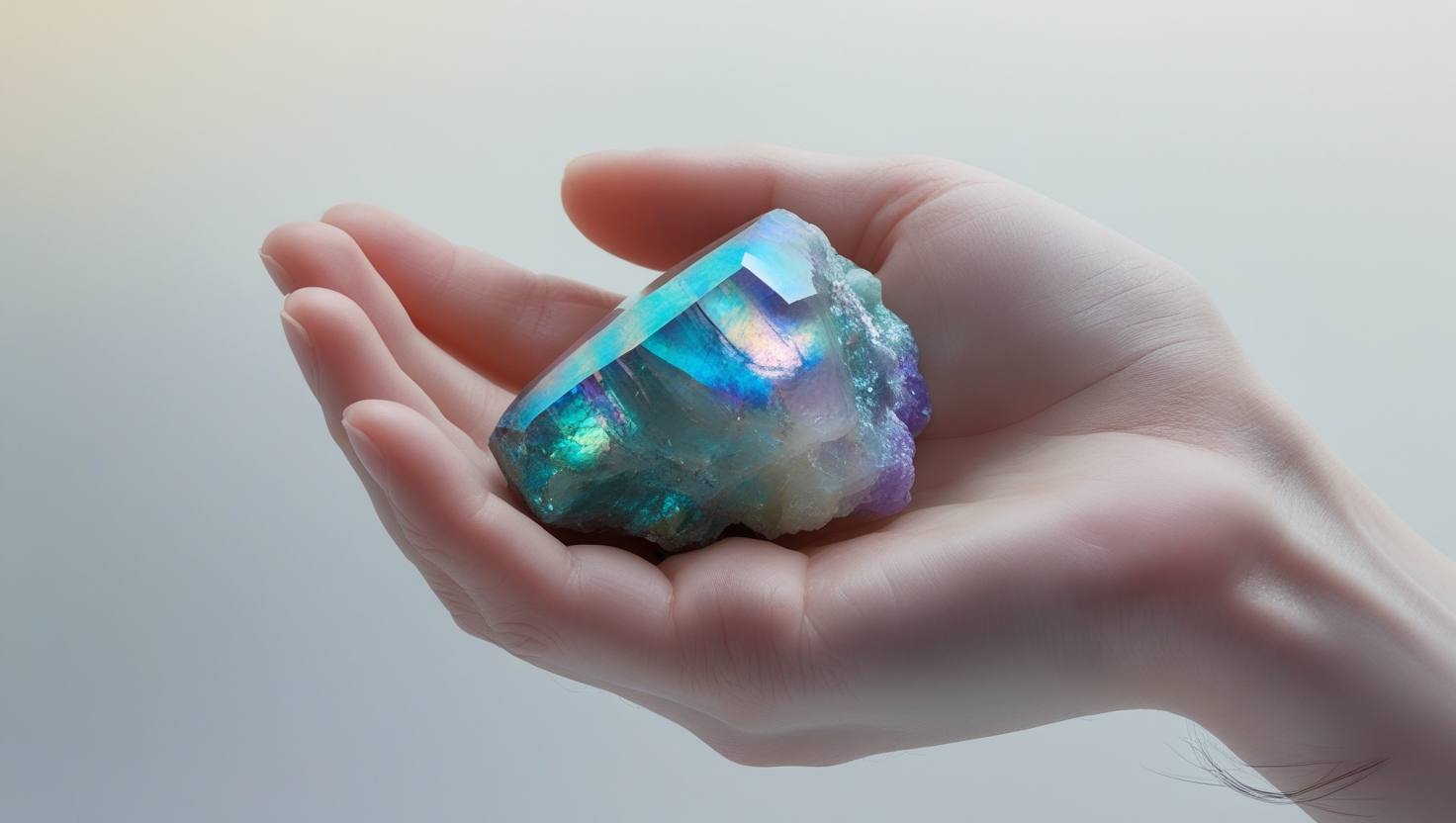
The Intimacy of the Close-up
The power of the image is amplified by the close-up perspective. A wide shot might show the specimen in a display case or on a table, but a close-up removes distractions and forces the viewer to focus solely on the intricate details of the subject.
In a close-up of a hand holding an iridescent mineral specimen, the viewer is brought face-to-face with the texture, form, and most importantly, the dynamic play of light on the mineral’s surface. Tiny facets that are invisible from a distance become prominent. Subtle shifts in color caused by minute changes in angle are highlighted. Imperfections that tell the story of the mineral’s formation – a tiny fracture, a rough edge, a specific crystal habit – become apparent.
The close-up transforms the viewing experience from passive observation to active exploration. It invites the viewer to imagine holding the specimen themselves, feeling its weight and texture. It emphasizes the intricate details that make each iridescent mineral specimen distinct. For a website showcasing these items, a high-quality close-up is essential. It allows potential buyers or enthusiasts to truly appreciate the quality and unique characteristics of the mineral specimen in a way that no description alone can achieve. It builds trust by being transparent about the specimen’s true appearance, flaws and all.
Furthermore, a close-up focusing on the interaction between the hand holding the mineral highlights the human scale. It grounds the geological wonder in something relatable – the size and texture compared to skin, fingernails, and fingerprints. This contrast makes the alien beauty of the iridescence even more striking. The close-up isn’t just about the mineral; it’s about the intimate encounter between human and earth.
The Human Element: A Hand Holding
The presence of the hand holding the iridescent mineral specimen is arguably the most critical element that transforms the image from a simple object shot into a compelling visual narrative. The hand holding adds context, scale, and a crucial human touch.
Why is a hand holding so effective?
- Scale Reference: Without a hand, it can be difficult to gauge the size of the mineral specimen. A hand holding it immediately provides a universally understood reference point. Is it pebble-sized, golf-ball sized, or larger? The hand tells you.
- Tangibility: The image of a hand holding implies touch, weight, and texture. It suggests that this is a real, physical object that can be interacted with. For online viewers who cannot physically touch the specimen, seeing a hand holding it adds a sense of tangibility and presence.
- Connection and Ownership: A hand holding something suggests care, appreciation, or ownership. It could be the hand of a collector proudly displaying a prized piece, a geologist examining a new find, a lapidary planning a cut, or a dealer presenting an item for sale. The act of holding implies a personal connection to the mineral specimen.
- Dynamic Viewpoint: As the hand holding the iridescent mineral specimen rotates or tilts slightly, the iridescence dances and changes. The image often captures this movement, showing the viewer the dynamic nature of the mineral’s colors in a way that a static shot on a flat surface cannot. The careful way the hand holding positions the specimen speaks to the desire to showcase its full beauty.
- Storytelling: Whose hand is it? Is it weathered from outdoor exploration, or smooth from years of careful handling? Even without seeing the person’s face, the hand holding the mineral adds a layer of narrative. It suggests a journey from the earth to this moment of appreciation.
The interplay between the intricate, often ancient beauty of the iridescent mineral specimen and the familiar, living texture of the hand holding it creates a powerful juxtaposition. It bridges the gap between the vastness of geological time and the fleeting moment of human interaction.
Capturing the Dynamic Beauty: Photography of Iridescence
Successfully photographing a close-up of a hand holding an iridescent mineral specimen requires skill and attention to detail. Iridescence is notoriously difficult to capture because it depends entirely on the angle of light and viewing.
Key elements for capturing the magic in such a close-up image:
- Lighting: Controlled, directional lighting is crucial. Moving the light source or rotating the mineral specimen (while being held by the hand holding it) is necessary to make the iridescence “pop.” Multiple light sources might be used to highlight different aspects of the specimen and the hand.
- Angle: Finding the optimal angle where the iridescence is most vibrant requires careful manipulation by the hand holding the specimen. The photograph must capture this peak moment.
- Focus: Given the close-up nature, achieving sharp focus on the key features of the iridescent mineral specimen is paramount. Depth of field can be shallow in close-up photography, so deciding whether to focus on the mineral, the hand, or both is a key creative decision.
- Background: Keeping the background simple and uncluttered ensures that the viewer’s eye is drawn directly to the hand holding the specimen and the vibrant iridescent mineral specimen itself.
- Detail: A high-resolution image is needed for a true close-up, allowing viewers to zoom in and appreciate the fine details of the mineral’s surface and the texture of the hand holding it.
A great photograph of a close-up of a hand holding an iridescent mineral specimen isn’t just a record; it’s an interpretation, an artist’s attempt to freeze a moment of dynamic beauty. It allows the viewer to experience the iridescence as if they were there, turning the stone in their own hand holding it up to the light.
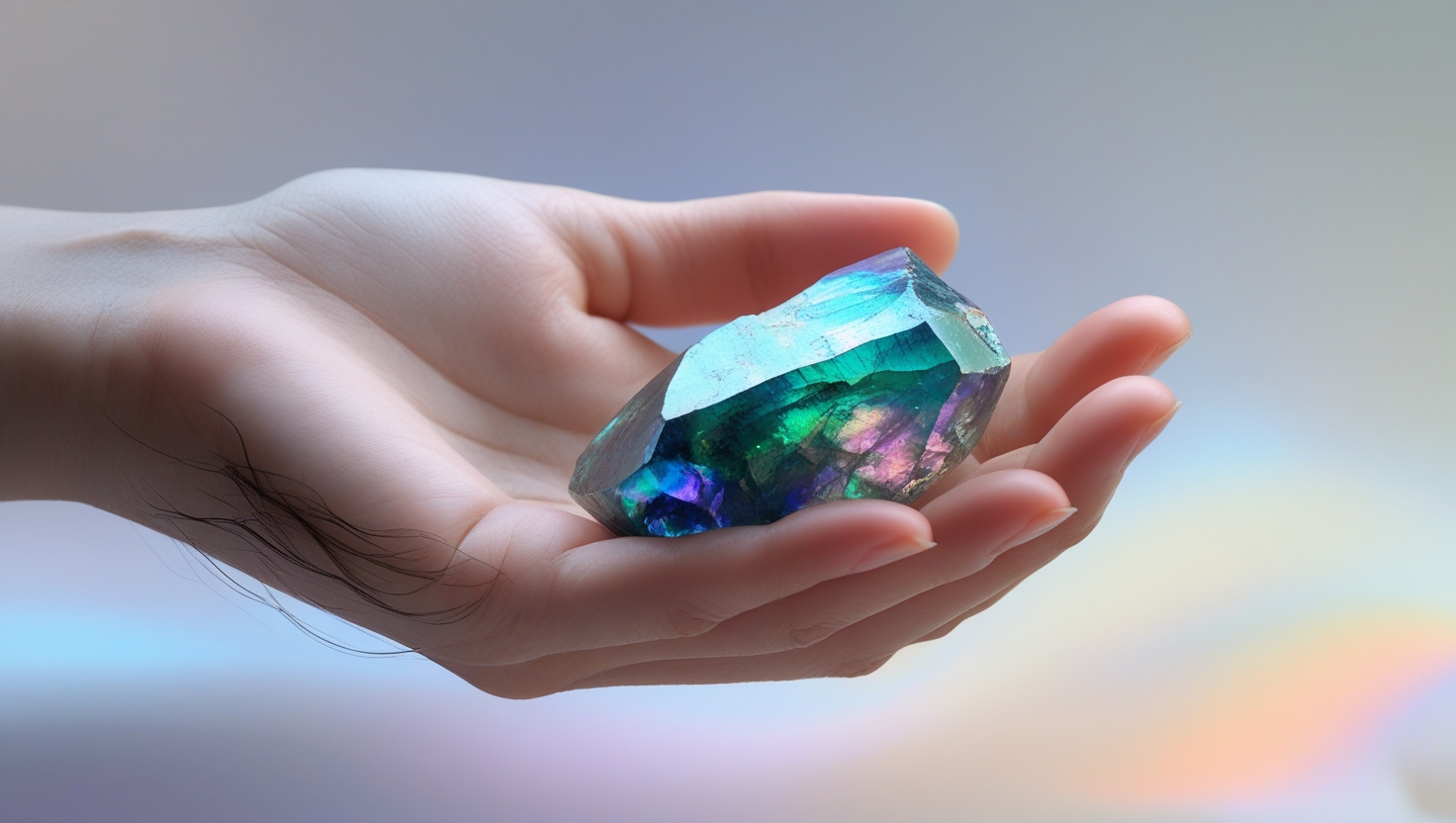
The Iridescent Mineral Specimen on Your Website
Why is this specific image composition so effective for a website?
- Engagement: It’s visually striking and immediately captures attention. The combination of color, light, and human presence is compelling.
- Authenticity: Showing a hand holding the mineral specimen feels authentic and personal, unlike a sterile product shot. It suggests that a real person has interacted with and appreciated this piece.
- Education: Such an image provides a perfect jumping-off point to discuss the science of iridescence, the origin of the specific mineral specimen, and the skills involved in finding or preparing it.
- Sales/Collection: For a website selling minerals or showcasing a collection, a series of close-up images of specimens being held allows potential buyers or visitors to get a realistic sense of size, color play, and quality. It answers the implicit question, “What would it look like in my hand?”
- Storytelling: As mentioned before, it adds narrative depth. It’s not just about the object; it’s about the human fascination with it.
Using a close-up image of a hand holding an iridescent mineral specimen as a hero image on a homepage, category banner, or blog post illustration immediately communicates the website’s focus on quality, beauty, and the personal connection to geology and minerals. It’s a powerful visual metaphor for bringing the wonders of the earth into human experience.
Beyond the Visual: The Feel of Holding
While the image focuses on the visual, the concept of a hand holding an iridescent mineral specimen also brings to mind the tactile experience. Minerals have distinct weights and textures. Some might feel cool and smooth, others rough and crystalline. A mineral specimen like Bornite might have a slightly rough, tarnished surface, while a polished Labradorite could feel smooth and cool against the skin.
The image implicitly suggests this tactile dimension. The way the hand holding the specimen is positioned, the slight tension in the fingers, the contrast between the skin’s texture and the mineral’s surface – all hint at the physical sensation of holding this piece of geological history. This sensory suggestion further enhances the viewer’s engagement with the image and the subject matter. It moves beyond just sight and touches upon the desire to physically interact with the natural world.
Conclusion: A Moment of Connection
The simple act depicted in a close-up of a hand holding an iridescent mineral specimen is a microcosm of our enduring fascination with the Earth. It represents the moment of discovery, the appreciation of natural art, and the scientific curiosity sparked by unexplained beauty.
The iridescent mineral specimen itself is a testament to immense geological forces and complex natural processes, capturing light in dazzling, shifting colors. The close-up perspective invites us into its intricate world, revealing details that might otherwise go unnoticed. And the hand holding it provides scale, tangibility, and a deeply human connection to a piece of the planet’s ancient past.
For any website dedicated to minerals, geology, or natural art, incorporating such images is vital. They are more than just pictures; they are invitations to explore, to learn, and to appreciate the quiet, sparkling magic that can be held quite literally in the palm of a hand holding a beautiful, iridescent mineral specimen. It reminds us that even the universe’s most spectacular light shows can sometimes be held right there, in a close-up, within our very own hand holding a piece of colored stardust from the Earth itself.
